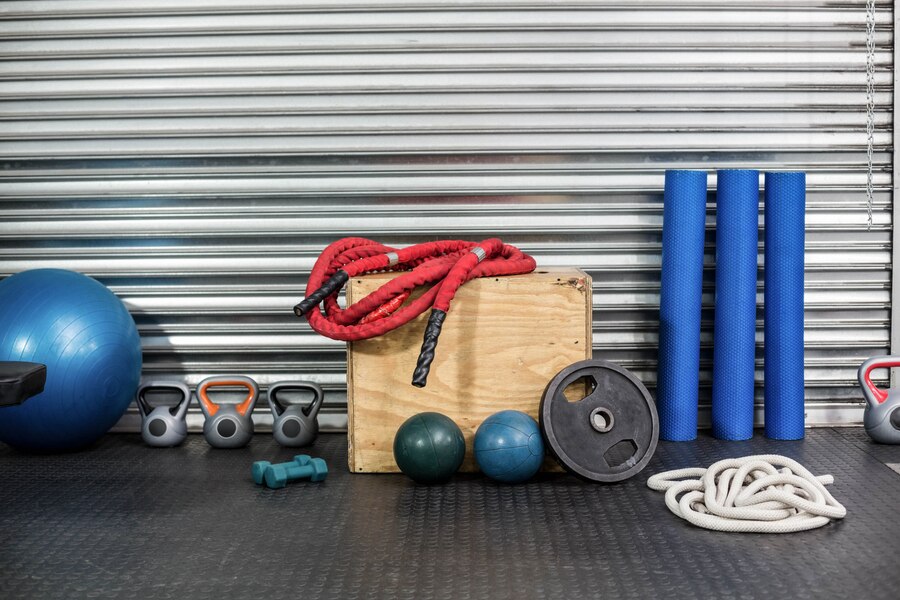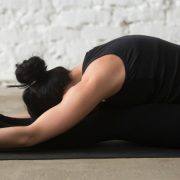Storing health and fitness equipment in self-storage units is becoming increasingly popular among fitness enthusiasts and professionals. As the focus on health and wellness grows, so does the accumulation of fitness gear, ranging from simple weights to bulky exercise machines. The challenge arises in finding adequate space to store these items, especially in urban living environments where space is at a premium.
Self-storage units offer a practical solution, providing the extra room needed to keep fitness equipment safe, accessible, and in good condition when not in use. This approach not only helps in decluttering living spaces but also ensures that the equipment remains in optimal condition, ready for use. The introduction of self-storage for health and fitness gear reflects a growing trend in how people manage their lifestyle and wellness resources, emphasizing the need for convenient, flexible storage solutions that support a healthy and active lifestyle.
Types Of Fitness Gear For Self Storage

When considering self-storage for fitness equipment, it’s essential to understand the types of gear that can be efficiently stored. From lightweight items like yoga mats and resistance bands to heavier equipment such as treadmills and weight benches, each requires appropriate space and care. Dumbbells, kettlebells, and barbells are common in personal fitness collections and can be easily stored in storage units in Pittsburgh, offering both convenience and security.
Additionally, cardio equipment like stationary bikes and rowing machines are ideal candidates for storage, especially for those with limited home space. Even specialized gear like Pilates reformers or boxing bags can find a suitable home in these units.
By utilizing storage units in Pittsburgh, fitness enthusiasts can keep their workout spaces at home clutter-free while still having easy access to a variety of fitness equipment. This flexibility allows individuals to maintain diverse and adaptable workout routines, ensuring their fitness journey is not limited by space constraints.
Choosing Climate-Controlled Units
Selecting a climate-controlled storage unit is crucial for preserving the integrity of certain types of fitness equipment. This environment ensures that gear remains in top condition, unaffected by extreme temperatures or humidity.
Factors to consider when choosing a climate-controlled unit include:
- Temperature Stability: Protects against damage from extreme heat or cold.
- Humidity Control: Prevents rust on metal parts and degradation of rubber or foam.
- Air Quality: Reduces the risk of mold and mildew, particularly on fabric and cushion items.
- Dust and Pest Control: Keeps the equipment clean and free from pests.
- Protection from External Elements: Shields equipment from external environmental factors.
For more information on the importance of climate control in storage, the American Fitness Professionals Association offers insights into equipment care. By opting for climate-controlled storage, fitness enthusiasts can ensure that sensitive equipment like electronic treadmills, weight machines with upholstery, and yoga accessories are well-protected. This careful consideration in selecting the right storage environment not only prolongs the life of fitness equipment but also maintains its performance and safety for continued use.
Organizing Fitness Equipment In Storage

Effective organization of fitness equipment within a self-storage unit is vital to maximize space and maintain the condition of the gear. The arrangement should start with placing larger items, like treadmills or ellipticals, in the back of the unit, ensuring they are stable and won’t tip over. This creates a foundation around which smaller items can be organized.
Utilizing vertical space is key; wall-mounted racks or shelves can hold weights, yoga mats, and resistance bands, keeping them off the floor and easily accessible. It’s also important to leave enough space between items for airflow, which helps prevent moisture accumulation and potential damage.
Equipment should be arranged in a way that allows for easy access, with frequently used items placed near the front of the unit. Careful consideration in the placement of each item not only preserves its condition but also saves time and effort during retrieval.
This organized approach ensures that each visit to the storage unit is efficient, allowing for quick and hassle-free access to all fitness equipment.
Maintaining Equipment While Stored
Proper maintenance of fitness equipment while in storage is essential to ensure its longevity and readiness for use. Here are crucial maintenance steps:
- Regular Cleaning: Before storing, thoroughly clean each piece of equipment to remove sweat, dirt, and grime.
- Check for Wear and Tear: Inspect for any damage and repair if necessary to prevent further deterioration.
- Lubrication: Apply appropriate lubricants to moving parts to keep them functioning smoothly.
The Centers for Disease Control and Prevention (CDC) offers guidelines on cleaning and maintaining sports equipment, which are highly applicable in this context. Regularly performing these maintenance steps can prevent issues like rusting, mold growth, and mechanical failure. Additionally, visiting the storage unit periodically to check on the equipment, especially if stored long-term, is crucial.
This ongoing care ensures that when the equipment is retrieved from storage, it remains in optimal condition, ready for immediate use. Proper maintenance not only extends the life of fitness equipment but also ensures safety and effectiveness in workouts post-storage.
Access And Management Of Stored Items

Efficient access and management of stored fitness equipment are essential for maintaining a seamless exercise routine. Creating a structured system for accessing the storage unit is important, especially for those who frequently alternate between different types of workout gear. This might include scheduling regular visits to the unit to swap out equipment based on training needs or seasonal changes.
Equally important is ensuring the storage unit is easily accessible, preferably located close to either the home or the usual workout space. This convenience is vital for incorporating stored equipment into a regular lifestyle routine without it becoming a hindrance.
Effective management also involves keeping an updated inventory of the stored items, which aids in quick retrieval and reduces the time spent searching for specific equipment. Adhering to these practices makes the use of self-storage units an efficient solution, seamlessly integrating into the daily lives of fitness enthusiasts.
Benefits Of Fitness Storage
In conclusion, the strategic use of self-storage units for fitness equipment offers a practical solution for space management and equipment maintenance. This approach enhances the workout experience by providing secure, organized, and accessible storage options.
Read Also:

















